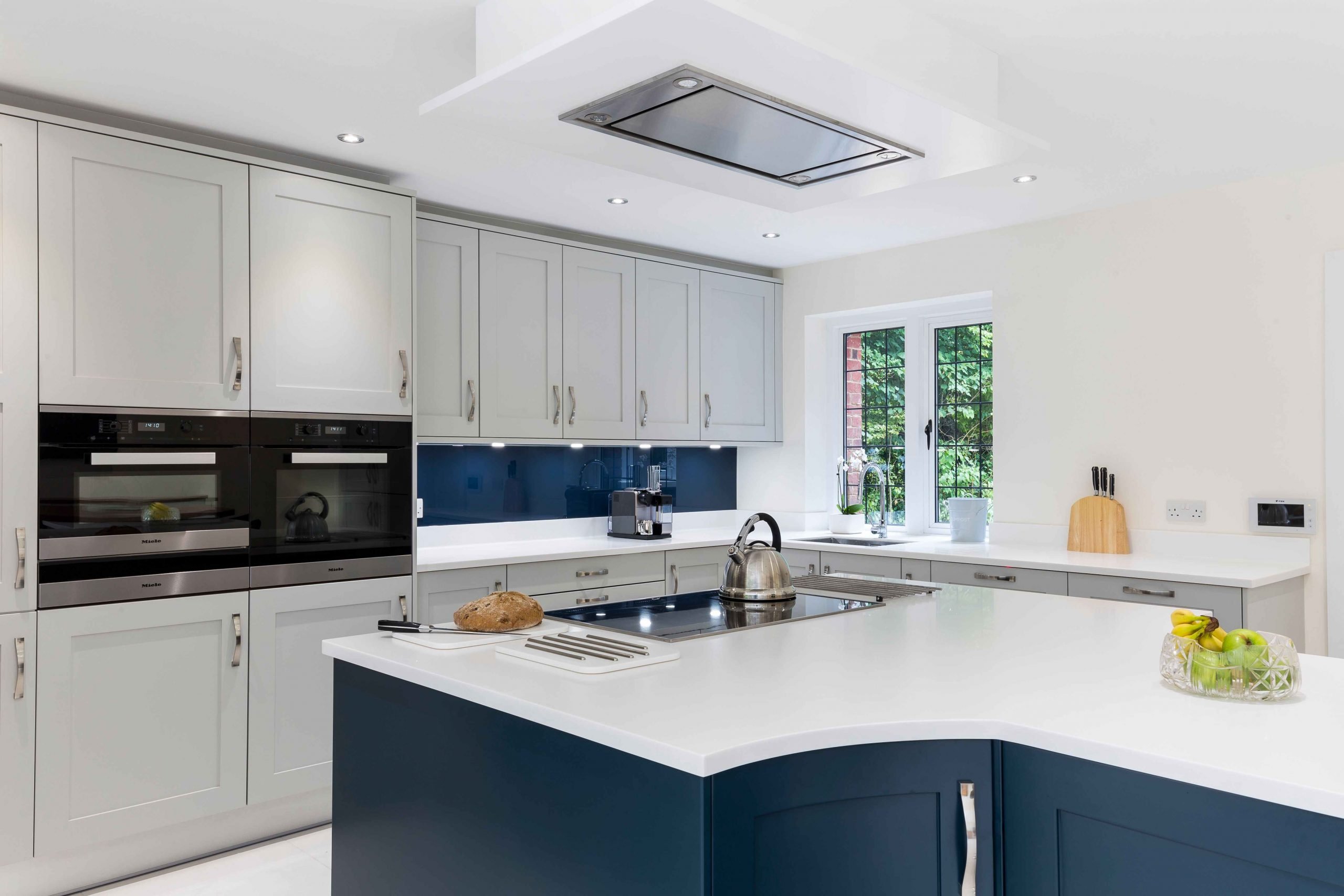This article explains the UK building regulations around kitchen extractor fans—whether they’re required by law and the benefits they provide. With information on ventilation, condensation, and practical considerations, it offers guidance on when and why an extractor fan is recommended for your kitchen. Credit: Stoneham Kitchens Yes, having an extractor fan is highly recommended for any kitchen to provide proper ventilation. Extractor fans effectively remove odours, grease, steam and smoke from cooking. They help keep the kitchen clean and prevent moisture build-up. In my expert opinion, installing an extractor fan is one of the best investments you can make for your kitchen. While not always an outright legal requirement, a good extractor fan makes a huge difference in keeping the kitchen air fresh and breathable during cooking. I always recommend including an extractor fan in any kitchen remodel or new construction. Proper ventilation should be a top priority. Kitchen extractor fans have been a legal requirement in the UK since April 2006, but there are some nuances: The regulations aim to deal with condensation and smells from cooking. While opening a window doesn’t provide the same controlled ventilation, some form of extractor or hood is recommended even if not legally required. Vented extractors ducted outside are most effective at removing steam, smoke, and kitchen grease. But they involve external ducting and are trickier to install. Ultimately, while mandated for new kitchens, extractors may not be an absolute necessity for minor kitchen updates. Their practical benefits, however, make them well worth considering. Credit: TradesmenCosts.co.uk Here are some key times when installing a cooker hood can be especially beneficial: Extractor fans help clear the air, preventing lingering odours in your kitchen and potential moisture damage over time. Even if your cooker has decent ventilation already, upgrading to a powerful extractor can make a big difference. Wall-mounted cooker hoods are most effective due to their proximity to the cooking fumes. Island cookers can benefit from downdraft or ceiling extractors instead. Consider ducted or recirculating models to suit your kitchen layout. Installing a cooker hood along with your new kitchen is ideal. But it can also be added down the line if condensation or steam becomes an issue. Extractor fans provide several advantages for your kitchen: Powerful cooker hoods are especially effective for venting cooking fumes. They suck air directly upward before odours can spread. This localised extraction helps keep the rest of the kitchen cleaner and clearer. For open-plan kitchens or smaller homes, extractor fans are essential. Without them, cooking smells and moisture can end up all over the house. Consider adding charcoal filters for recirculating cooker hoods. They help neutralise odours for improved indoor air quality. Kitchen extractors also remove excess heat from cooking. So, they help regulate temperature and prevent the kitchen from overheating. There are several types of kitchen extractor fans to choose from: Consider noise levels and extraction power. More powerful fans remove odours better but can be noisy on higher settings. Look for energy-efficient models too. For open-plan spaces, choose an extractor with a wider capture area. Carbon filters help with recirculated air. Pick an extractor style to match your kitchen layout and design. There are many options to effectively keep the kitchen air fresh. Selecting the best extractor fan for your kitchen depends on several factors: Taking time to evaluate your needs will ensure you select the perfect extractor fan for cooking, comfort and kitchen style. Extractor fans have been a legal requirement in new UK kitchens since April 2006 when Part F of the building regulations came into effect. However, they are not necessarily required when simply replacing kitchen units in an existing room. If you don’t have an extractor fan, opening a window can provide some ventilation. Portable extractor fans are another option, or installing a cooker hood that recirculates the air back into the room rather than venting it outside. Extractor fans are recommended for any hob, including electric models. While electric hobs don’t produce as much steam, smoke, or grease as gas hobs, a cooker hood will still help remove odours, moisture, and lingering grease in the air. In conclusion, while not an outright legal requirement in all kitchens, installing an extractor fan is highly recommended to effectively remove odours, steam, smoke, and condensation. Extractor fans serve an important practical purpose in keeping kitchen air clean and breathable. Considering does a kitchen need an extractor fan, the answer is yes for optimal air quality and ventilation.
Does a Kitchen Need an Extractor Fan?

Key Points
Our Opinion
Do Building Regulations Require an Extractor Fan?
When Should You Install a Cooker Hood?

What Are the Benefits of a Kitchen Extractor Fan?
What Types of Extractor Fans Are Available?
How to Choose the Right Extractor Fan
FAQ
Is an extractor fan a legal requirement?
What can I use if I don’t have an extractor fan in my kitchen?
Do you need an extractor fan in the kitchen for an electric hob?
Conclusion
